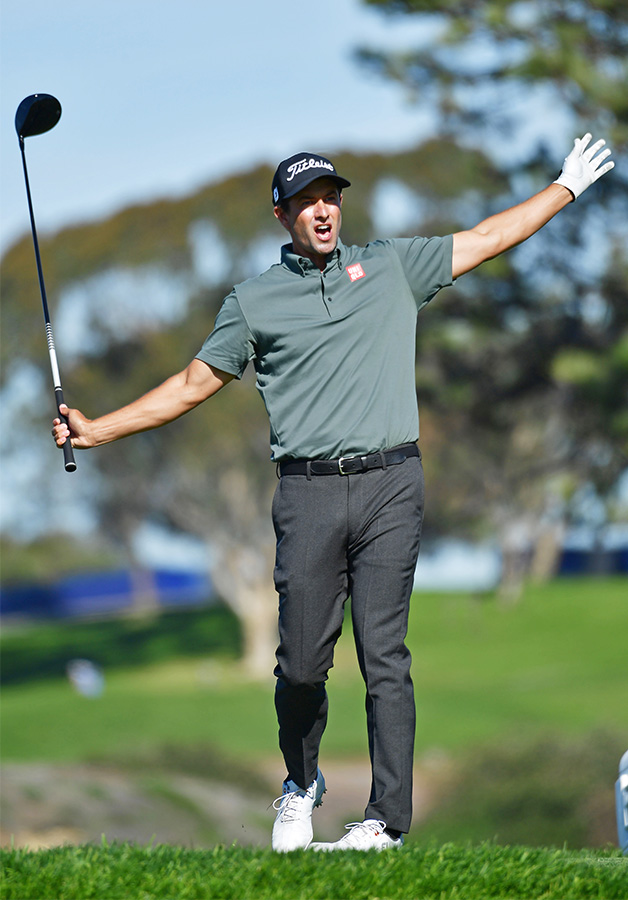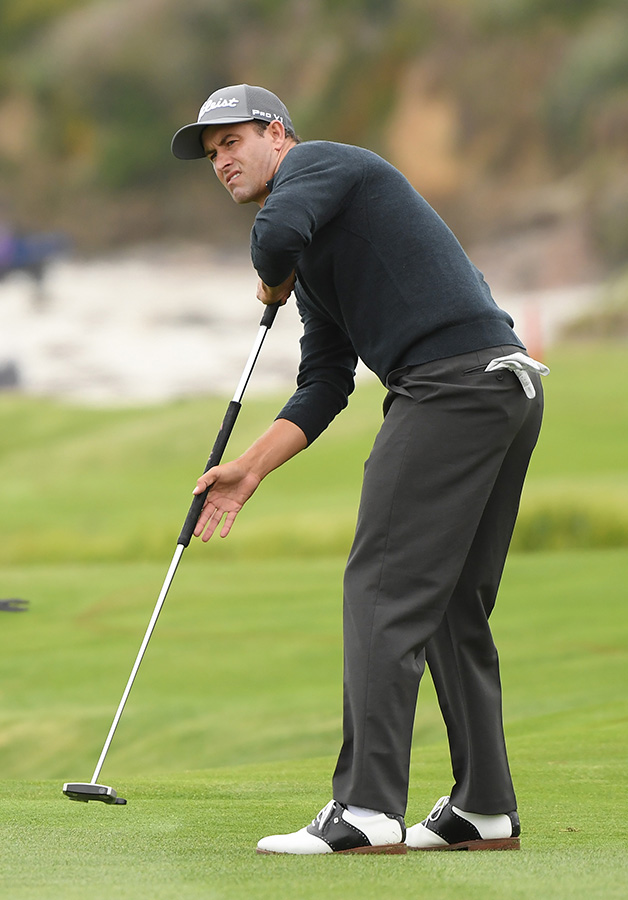It is difficult to imagine Adam Scott out of rhythm. But it happens. Even with a swing many class as the best in the game – some say ever – there are occasions when Scott is swinging it poorly, by his standards.
So how does he save bad rounds? “By staying in the moment,” Scott tells Australian Golf Digest. One recent example sticks out: on the par-4 13th hole at Pebble Beach on Sunday at the US Open, Scott flared a tee shot right and out-of-bounds, moments after a making birdie at the 12th to pull within three shots of the lead. He double-bogeyed that hole, but collected himself and made birdie at the par-5 14th. Although the double ruled him out of contention, he still salvaged a 68 to finish tied for seventh.
Some changes to his putting routine and equipment, rather than the stroke itself, have also helped Scott save rounds. He ranks 21st in strokes gained: putting on the US PGA Tour – his best rank in 15 years.
Here, the former world No.1 shares his experience in weathering scorecard storms >>>
 1. Don’t Throw In The Towel
1. Don’t Throw In The Towel
There are so many things you can do to save bad rounds. But not giving up has got to be right up there for the most important. Keeping your composure is key, because frustrated thoughts can certainly lead to more disaster. When you think clearly, the next decision you make after a poor shot is likely to have little to no emotion. Invariably, you’ll make a better swing. After a bad shot, ask yourself how you can let it go before arriving at the next shot.
THE TAKEAWAY
After a bad shot, ask yourself how can you let it go before arriving at the next shot.
2. Stop The Bleeding
It’s also important not to have the feeling of chasing it back after a double-bogey, like I did on 13 on Sunday at Pebble Beach. After a bad hole, trying to rattle off three birdies is not the right play. Your first instinct should be, OK, let’s get it in play. What club do you need to hit to do that? What type of shot? Is your go-to shot a fade? You need to go back to basics. You want a par to stop the bleeding.
THE TAKEAWAY
Don’t try to chase shots back too quickly when disaster strikes. Your aim should always be to follow up a bad hole with a par.

3. You’re Only A Good Shot Away
If you have put yourself out of position, it’s not such a bad thing to take your medicine. You need to get it out of your mind that chipping out of the trees will lead to a terrible hole. You never know when an unbelievable third shot is going to happen – a wedge to six feet or you might drain a 30-footer for par. Going for the miracle play from the trees can kill your scorecard if you get it wrong.
When you have the composure to take your medicine – even though you want to try a miracle – you can actually flip the momentum because a par save actually feels as good as a birdie, in that regard. Certainly having the belief you can chip it out and take your medicine inspires confidence. The willpower to do that is a huge asset in turning things around on the golf course.
THE TAKEAWAY
Remember, chipping out of trouble isn’t wasting a shot if you can execute the next one. Do that and you can swing the momentum back in your favour very quickly.
 4. Think Routine, Not Stroke
4. Think Routine, Not Stroke
I think I’ve tried five different putters in 2019! But I’ve tried to pick the putter (the broomstick putter) I’m most comfortable with and I’m sticking to what I think is good. What I’ve worked on with my coach, Brad Malone, is not really technical. It’s more to do with my routine. We’ve implemented a constant flow of movement; never static. Always moving and dynamic. That’s the theory behind my putting this year and I haven’t worked on the stroke itself.
The principle of constant movement is that it enhances my technique. One of the absolutes of golf teaching is that you have natural tendencies. Some of them are impossible to change and are what a golfer will lean on under pressure. It’s your golf DNA and everyone has different fundamentals. With the coaching of my game, I’m trying to complement my natural tendencies, so I don’t have to do something unnatural.
With all the information we have at our fingertips, we are prone to freezing over the ball with too many thoughts. When I picture static movement during practice, I picture the way Roger Federer walks up to the service line during a tennis match. He’s always moving and it feels like one continuous motion, from walking to serving.
I don’t picture Roger Federer immediately before I strike a putt during competitive rounds on the US PGA Tour [laughs]; it’s only during practice to ingrain the idea of constant movement. If I do that, I’ll walk into a putt during competition, put the putter down and hit it.
THE TAKEAWAY
Don’t get technical with your putting. Focus on a pre-shot routine that promotes constant movement so you don’t have time to overthink your stroke.

Adam Scott’s Scrambling-From-The-Rough success rate, ranking him second on the US PGA Tour in 2019
– Adam Scott spoke with Evin Priest



